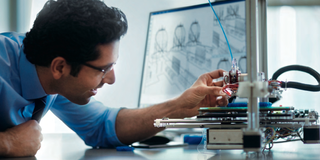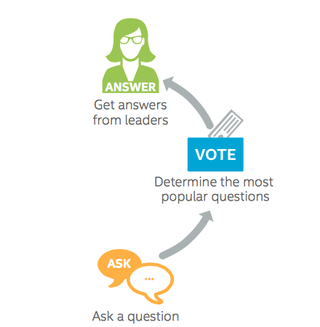How Intel's revamped IT dept helped generate record revenue
Intel shows the value of using the latest analytics, mobile, collaboration and cloud tools

Intel has given an insight into how it's used mobile, analytics, collaboration and cloud technology to drive productivity and record revenue.
In its annual IT Business Review, Intel CIO Kim Stevenson highlighted how upgrading internal systems and processes made a significant contribution to the firm's record revenue of $55.9 billion during 2014.
Despite cutting IT spending per employee from $13,600 in 2012 to $12,700 last year, Intel appears to have made significant improvements to its infrastructure and workflow. Below are the five key takeaways from the report.
1) Boosting revenue through analytics
The deployment of business intelligence and analytics tools added $351 million to Intel's revenue during 2014.
Intel used predictive analytics and real-time data analysis to help its sales teams identify opportunities for high-volume sales, and to increase cross-sell and up-sell.
Analytics were also used to make critical business decisions, such as when to adjust product pricing, use rebates and how much inventory it should produce.
Get the ITPro. daily newsletter
Receive our latest news, industry updates, featured resources and more. Sign up today to receive our FREE report on AI cyber crime & security - newly updated for 2024.
2) Mobilising the workforce
Like many enterprises, Intel has realised that providing the latest technology is crucial when it comes to attracting/retaining high-calibre staff.
Intel has over 106,000 employees - with almost everyone using laptops via corporate deployment and BYOD schemes.

The firm supports all major smartphone platforms and a big chunk of the workforce is using an Ultrabook or a 2-in-1 (45,000 touch enabled devices have been deployed).
Although tablet use at Intel is relatively low (5,000) at present compared to the size of the workforce, workers have reported benefits in proof of concept trials.
Productivity of technicians using tablets was up 17 per cent and printing needs were reduced as they avoided printing 300 pages per tool repair.
3) Connecting employees with leadership via social media
Intel promotes the use of collaboration tools so employees can work together in real-time and increase efficiency. Internal results indicate that teams using such tools save 19 hours of time per month.
However, one of the more interesting ways Intel uses social media is to allow employees to interact with executive leadership. This helps bridge the gap between the 100,000-strong workforce, which is spread across 170 sites in 66 countries.
The chipmaker introduced a virtual "Take it to the Top" forum in June 2014. Intel CEO Brian Krzanich and Intel President Rene James took part, together with 14,000 employees. In total 700 questions were submitted, with the most popular voted for by employees and put to the execs.

After positive feedback, Intel said it will expand this system to local teams - to help solve problems and generate ideas. It also plans to add web chat capabilities.
4) Saving money via private cloud
Intel deploys a private cloud, through which it deploys services - and claims this saves it $7.5 million per year. The firm is also experimenting with making the move to a hybrid cloud, which will help it optimise its internal processes.
"Hybrid cloud hosting also increases flexibility, allowing us to dynamically adjust capacity when needed to support business initiatives efficiently," Intel noted in the report.
5) Creating smart factories and office buildings
Intel is deploying IoT-enabled sensors and analysing data to improve its factories.
The chipmaker is estimating an increase of $30 million in output and yield when such systems are deployed across its assembly and test facilities. This will involve analysing pressure variation and monitoring the status of complex equipment to detect any potential failures.
Intel has also been working on creating a scalable "smart building" reference design.
So far the focus has been on saving employees the time it takes to find a conference room. On average it takes employees three minutes to locate a meeting room - resulting in a loss of 11,400 hours per year. The firm is aiming to help employees see available rooms in real-time.
By kitting out offices with motion, temperature, light and door sensors, Intel is also working on ways to increase efficiency by enabling automation.




